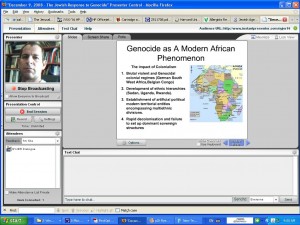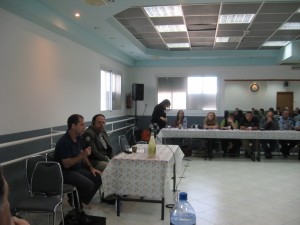Clalit HMO, East Jerusalem – adapting clinics to Arabic speaking patients – January 5, 2009
In a previous blog we reported on the meeting of the Clalit steering committee on cultural competence in serving Arabic-speaking patients. Today we held a larger meeting where we discussed the mapping that the JICC performed at the Sheikh Jerakh clinic, as well as the draft work plan for the future.
At the end of the meeting subgroups were formed for implementing the various parts of the plan, including translation services, setting issues (e.g., Arabic signage and responding to relevant cultural needs at the clinics), staff trainings etc.












